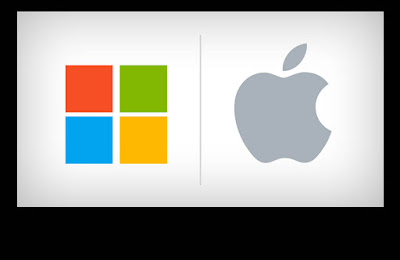This week, Microsoft and Apple will stage dueling events a day apart. The rumor says both companies will be introducing new PCs, Microsoft with one or more additions to its Surface lineup, Apple finally refreshing its MacBook line.
Longtime watchers of the PC/Mac space will be tempted to evaluate these new devices using familiar touchstones and benchmarks especially CPU speeds. But if you do that you're living in the past.
Modern PCs and Macs have most of the same subsystems that their predecessors did but their real strengths aren't in the traditional specs we've come to know and trust over the years. So, in advance, of this week's announcements I offer four criteria for helping you decide whether a new PC design is truly modern or is a holdout from a bygone era.
Longtime watchers of the PC/Mac space will be tempted to evaluate these new devices using familiar touchstones and benchmarks especially CPU speeds. But if you do that you're living in the past.
Modern PCs and Macs have most of the same subsystems that their predecessors did but their real strengths aren't in the traditional specs we've come to know and trust over the years. So, in advance, of this week's announcements I offer four criteria for helping you decide whether a new PC design is truly modern or is a holdout from a bygone era.
One of the rumors I've heard persistently is that Microsoft will release updated Surface Pro 4 and Surface Book models with the newer 7th Gen Intel Kaby Lake CPUs instead of the current 6th Gen Skylake processors.
Those two Surface devices launched last year were first to use the Skylake processors. And that launch was to put it mildly a mess. It took about four months of constant firmware and driver updates to produce a baseline operating system that is solid and stable and that refinement has continued.
So now for the sake of incremental increases in performance Microsoft will replace those CPUs with a newer version and risk another round of performance and reliability problems that have to be fixed with another few months of updates. Likewise, I don't expect Apple to choose bleeding edge CPUs for its new devices.
Fingerprint readers and facial recognition can do an incredibly good job of minimizing the friction of signing in to a PC using a strong password. Both the Surface Pro 4 and the Surface Book support facial recognition and my experience with that technology has been overwhelming positive. The real proof It's downright annoying when I sit down at a PC that doesn't support biometrics and have to enter a password instead.
Given Microsoft's commitment to Windows Hello I expect that any new Surface device launched this week will have biometric support as a key feature. And if the latest wave of leaks from Cupertino are any indication the new MacBook Pro will finally include the TouchID tech that's been part of iOS devices for two years.
At this year's big IFA tradeshow in Berlin I saw several PCs equipped with Windows Hello compatible fingerprint readers. Including Lenovo's Yoga 910 and Acer's Swift 3 and Swift 5. I can't find anyone besides Microsoft using facial recognition.
If you're a Windows OEM, any new PC series must include a Trusted Platform Module (TPM) to meet the minimum hardware requirements for Windows 10.
As of July 28, 2016 all new device models lines or series must implement and be in compliance with the International Standard ISO/IEC 11889-2015 or the Trusted Computing Group TPM 2.0 Library and a component which implements the TPM 2.0 must be present and enabled by default from this effective date.
The obvious advantages of a TPM include the ability to store encryption keys for Secure Boot support and hardware based encryption of the system drive. But having a TPM on board also unlocks some important new features in Windows 10 Enterprise. That feature set includes Credential Guard which uses virtualization based security to protect credentials from attacks like Pass-The-Hash.
Apple's iOS devices include a feature called Secure Enclave that offers similar protection for credentials backed by TouchID. I'll be curious to see whether anything similar makes it into the new Macs.
If the rumors are correct Apple's new MacBooks will have four USB-C ports, which might be a bit of an overreaction to the criticism the company faced when it released the New MacBook with just a single port.
Presumably, any new Surface device will also have at least one and perhaps more USB Type-C connectors.
Those newfangled connectors are incredibly versatile and fast and they're also reversible which eliminates one of the biggest aggravations of the Type A and Micro-A plugs.
Still that convenience comes at a cost. A USB Type-C connection is capable of an amazing array of capabilities, including supplying power, Gigabit networking, superfast data transfer and even driving a high resolution display. But here's the catch - There's no way of knowing exactly what that connector is capable of on a particular device without inspecting a detailed spec sheet.

No comments:
Post a Comment